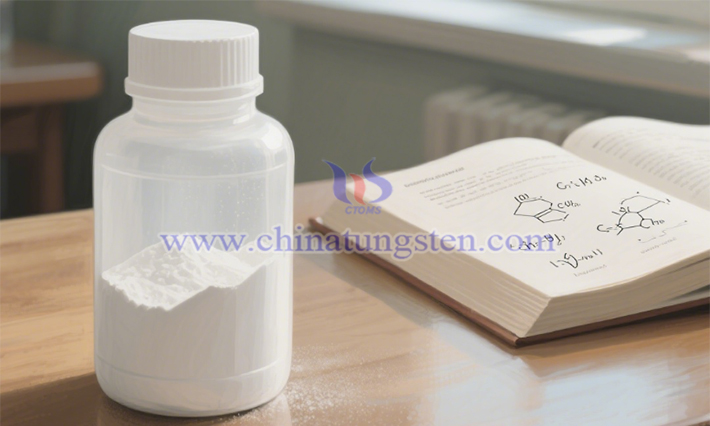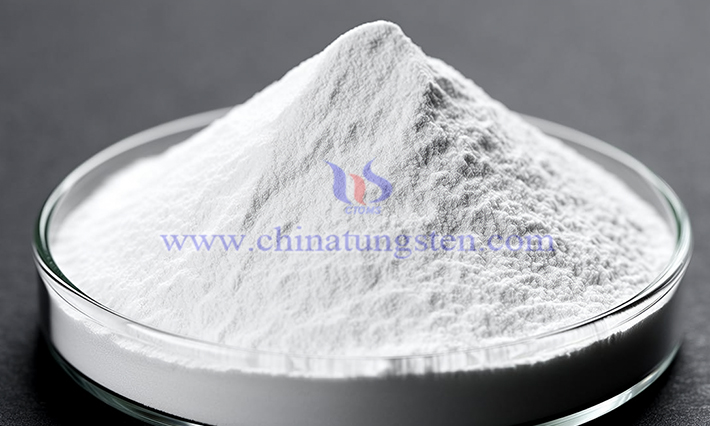What Is Calcium Tungstate?
- Details
- Category: Tungsten Information
- Published on Thursday, 03 July 2025 11:37
Compared to alkali metal tungstates (e.g., sodium tungstate and potassium tungstate), calcium tungstate (CaWO₄) exhibits markedly different crystal structures and properties due to the incorporation of Ca²⁺, evolving from its industrial designation as "synthetic scheelite" to its core application as a scintillator material.

The chemical composition of calcium tungstate highlights its distinction from alkali metal tungstates: As an alkaline earth metal with atomic number 20, Ca²⁺ differs in its outermost electron configuration from Na⁺ and K⁺, leading to the formation of a tetragonal crystal system when combined with tungstate ions [(WO₄)²⁻], in contrast to the monoclinic system of Na₂WO₄ and K₂WO₄. This difference in crystal configuration arises from variations in cation radius—Ca²⁺ (ionic radius 100 pm) aligns more closely with the coordination needs of the tungstate ion compared to Na⁺ (102 pm) and K⁺ (138 pm), resulting in a more symmetric [Ca(WO₄)] lattice. Within this structure, W exists in the +6 oxidation state at the center of the WO₄ tetrahedron, forming a stable crystal with Ca²⁺ via ionic bonds, contributing to a density of 6.06 g/mL and a high melting point of 1,580°C.
Beneath its white powder appearance, calcium tungstate harbors multidimensional functional attributes: Optical Response: As a self-activated luminescent material, the WO₄²⁻ groups in its lattice undergo charge transfer transitions from O²⁻ to W⁶⁺ under UV or X-ray excitation, emitting blue fluorescence. Catalytic Activity: The Lewis acidity of Ca²⁺ combined with the redox properties of WO₄²⁻ enables decomposition in hot hydrochloric acid to produce active WO₃ species, showing catalytic potential for ester hydrolysis and organic pollutant degradation. Physical Stability: Its slight solubility in water and ammonium chloride solutions ensures structural stability in humid environments.

Traditional preparation methods for calcium tungstate, such as solid-state reaction and hydrothermal techniques, face challenges like high reaction temperatures and uniform product morphology. However, the β-cyclodextrin-based soft-template method offers a new approach to material design: Dissolve sodium tungstate in a β-cyclodextrin aqueous solution to form a pre-assembled system (solution A) using the cavity structure of cyclodextrin. Then, mix a calcium nitrate solution with solution A under magnetic stirring, where Ca²⁺ and WO₄²⁻ combine via electrostatic interactions, and β-cyclodextrin adsorbs at the crystal growth interface to regulate the direction of crystal nucleation. Finally, precipitate, wash with deionized water, and vacuum-dry to obtain calcium tungstate microcrystals.
As "synthetic scheelite," CaWO₄ serves as a key intermediate in producing ammonium paratungstate (APT). Through the caustic soda leaching process, CaWO₄ reacts with NaOH to form soluble sodium tungstate, which is then acidified and ammoniated to yield APT, subsequently used in the production of tungsten oxide, tungsten alloys, and cemented carbides.
In oscilloscopes and CRT displays, the blue fluorescence of CaWO₄ makes it an ideal phosphor material, converting electrical signals into visible light. In medical diagnostics, its high sensitivity to X-rays and γ-rays as a scintillator enables its use in CT scanner detectors, where high-energy rays are transformed into fluorescent photons for lesion imaging reconstruction.
- Chinatungsten Online: www.chinatungsten.com
- CTIA GROUP LTD: en.ctia.group
- Tungsten News & Price: www.ctia.com.cn
- Molybdenum News & Price: news.molybdenum.com.cn
- Tel.: 86 592 5129696; Email: sales@chinatungsten.com